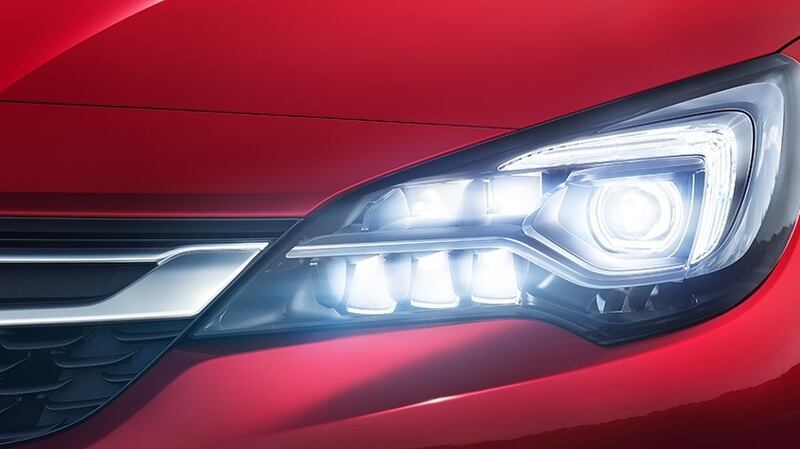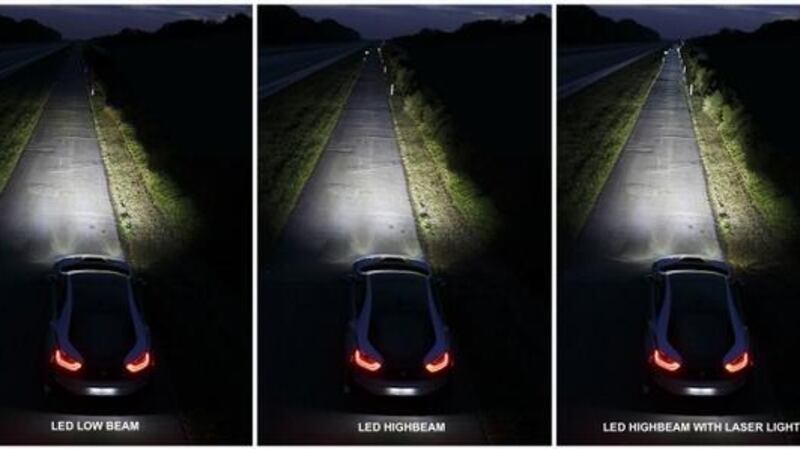Way back in 1913, Bosch claims it created the first electric vehicle light. A generator bolted into an early Mercedes car powered a pair of electric headlights that, while dim by today's standards, were a whole lot better than the lamps, usually using oil or actual candles, that had preceded them.
One hundred and six years on, boy, how things have changed. Even the most humble of cars can now be equipped with multi-bulb LED lights that can create your own personal sunrise as you drive, yet also dip automatically if they detect another car in front.
Actually, even that auto-dipping system isn't new. George Onksen, a research engineer for General Motors, created the first auto-dip system, one that used photoelectric cells to detect another car's oncoming headlights, way back in 1953. Predating even that, General Motors actually found some patents for similar systems that dated back to the 1940s, proof that what Onksen said at the time – "It has not been possible to get drivers to use their beams properly" – has been true almost as long as lights have been fitted to cars.
What's next, though? Have automotive lights reached a technical peak of perfection? Well, yes, pretty much. After all, BMW can currently sell you (at a suitably vast option price) a headlight that works not with LED bulbs but by firing an actual laser beam at a piece of phosphorous which then emits a bright, near-perfect-white light. Even if you were to buy a car as humble as an Opel Astra, you can now specify it with multi-beam LED lights, ones that can selectively dip the high beam light so that you're not dazzling other road users, but still getting the fullest possible benefits from your lights.

"The next step in lighting technology will be high resolution matrix headlamps with some thousands and up to more than one million pixels per lamp. This technology provides an even wider range of new possibilities such as the communication to other road users," Michael Bang, exterior lighting engineer at Opel said.
The use of LEDs has revolutionised lighting tech for cars
“Future lighting technologies will offer even higher resolutions. Therefore, they will allow an even more detailed controlling of the light for better road illumination for the driver as well as glare incidents which are further minimised.”
The use of LEDs has revolutionised lighting tech for cars. Light Emitting Diodes, to give them their proper name, are tiny semi-conductors that generate bright light when you pass an electric current through them. They’re perfect for use in vehicles, simply because they don’t heat up much, they’re small and light, and they’re far more reliable and long-lived than conventional bulbs. Indeed, they’re so efficient that they actually help you pay less motor tax every year.
“Compared to conventional bulb and reflector halogen systems, the power consumption of modern LED lamps is much lower. This is the reason why Opel is rolling out EcoLED lamps across the portfolio to combine the demands for a high lighting level with the lowest possible energy consumption,” said Bang.
“Compared to standard halogen lamps, the Eco LED has less than a quarter of the power consumption, with better lighting characteristics. This leads to a one gramme Co2 reduction. With this, German lighting engineering and technology makes a real difference to customers and the environment.”
So, between LEDs and laser light, we’ve reached what might be called a peak of technological perfection. What’s next? More LEDs, basically. The more individual lighting elements you can stuff into a headlamp unit, the more you can control the light, direct it, focus it, and use it to help a driver see what they’re doing.

"The digital matrix LED headlight showcases the next generation of light from headlights," said a spokesperson for Audi. "It divides the light into numerous tiny pixels and illuminates the road with a new type of precision and resolution.
“A similar form of the technology is used in many video projectors. Each headlight contains a matrix of more than one million micro-mirrors whose edge length is just a few hundredths of a millimetre. With the help of electrostatic fields, each individual mirror can be tilted separately up to 5,000 times per second.”
Such headlights will be able to do so much more than just dip and rise. They’ll be able to selectively block out sections of the beam to avoid dazzling others (as many systems already do), but will simultaneously be able to reduce the intensity of the section of the beam falling on a road sign (to avoid back-scatter and glare), while ramping up a pin-point spotlight to pick out a pedestrian in dark clothes strolling along the verge.
Vehicle lighting will have to take a major step beyond mere illumination and into the realms of communication
There’s a new purpose to exterior lighting beyond just showing the driver what’s in front of them. If autonomous cars are (ever) going to take to our streets, vehicle lighting will have to take a major step beyond mere illumination and into the realms of communication. You’d be amazed just how much communication there is, just via eye contact, between drivers and pedestrians on city streets.
If a car is driving itself, and the occupants have their heads down in a book or a Netflix binge session, that communication is gone, and the car will have to take up the strain. Toyota has developed LED lights that can mimic simple, cartoon-ish eye shapes, which help to tell pedestrians that the car has detected them and knows where they are. VW wants to take that a step further, using the next generation of ultra-bright, ultra-precise LED lights to project shapes and lines onto the road surface.
Those can be arrows which tell pedestrians which way the car is going to turn; red lines projected from the rear lights to show a “safe zone” when a car is reversing; or parallel lines projected in front which can help show how much space the car is taking up in a narrow street. Mercedes has even experimented with the ultimate in lighting courtesy – a projected zebra crossing, which shines onto the road ahead, and allows pedestrians to cross safely in front of the car.
Klaus Bischoff, Volkswagen's designer-in-chief, has very clear ideas about this: "The lighting of the future will become a means of communication. It will interact with the driver and with other road users – whether in a car, on a motorcycle or bicycle or as a pedestrian on the road – measurably improving safety. At the same time, we will integrate the lighting functions into the design of the vehicles more progressively than ever before."
There's a final benefit to new lighting tech, though, and that's in design. Matteo Licata, a former Alfa Romeo designer, now an author, blogger, and a designer of achingly cool T-shirts, said the development of high-tech lights had given car designers more freedom than ever before.



















